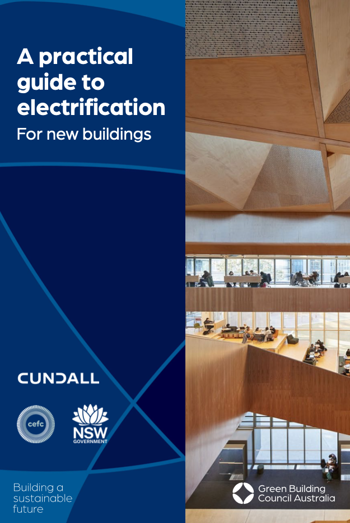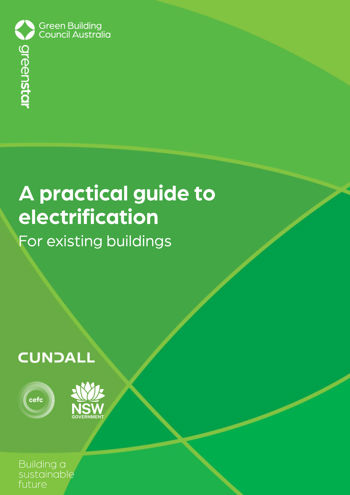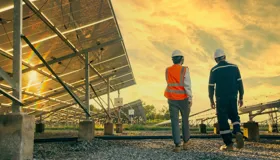
Practical steps for the electrification of buildings
Clear guidance on the steps to deliver climate positive buildings for owners, developers, facilities managers, consultants and building professionals.
These two practical guides to electrification for new and existing Australian buildings explain how to set zero carbon goals and deliver climate positive outcomes in the built environment.
REPORT 1
A practical guide to electrification: For new buildings
April 2022
A practical guide to electrification: For new buildings was developed by the Green Building Council of Australia and Cundall, together with the support of the NSW Government and the CEFC.
Read moreREPORT 2
A practical guide to electrification: For existing buildings
September 2022
A practical guide to electrification: For existing buildings was developed by the Green Building Council of Australia and Cundall, together with the support of the NSW Government and the CEFC.
Read moreWe are seeing a revolution in clean energy to address the challenges of climate change, air quality and energy affordability. Electrifying buildings is an essential step to do this. The technologies already exist – the key challenges are changing perceptions and improving understanding of the benefits of electrification and how to implement it.
about the industry
Electrification drivers
- Achieving net zero emissions: All-electric buildings powered by renewables are the preferred pathway to decarbonise our built environment as part of the transition to net zero emissions by 2050.
- Financing benefits: All-electric buildings are likely to have greater access to sustainable finance, as investors continue to seek assets that are on a clear decarbonisation pathway. Buildings that are left behind in the upgrade to electrification may risk being stranded assets and be uncompetitive in a sector that is responding to climate change.
- Resilience and risk reduction: Building and retrofitting assets to create all-electric buildings through the adoption of low emissions design and technology solutions can lift asset performance and resilience.
- Tenant and consumer preferences: All-electric buildings are well placed to capitalise on the growing preference for sustainability across the built environment.
report findings
Electrification benefits
- Most buildings standing today will still be operational in 2050. Electrifying existing buildings now will ensure they are future-proofed for a decarbonised world.
- Electrification can be achieved through the use of new and existing technologies, as well as sustainable design thinking.
- Substantial improvements to energy demand can be achieved through sustainability design principles implemented at the initial planning phase.
- Proven low emissions technology and building solutions include high thermal insulation, passive ventilation, solar shading and hydronic.
- Embedded power networks incorporated at the development stage improve access to renewable energy, reducing building emissions and energy costs.
- All-electric buildings are likely to attract investment via green, social and sustainable bonds, green and sustainability-linked loans, and sustainability-linked bonds, all of which are experiencing strong growth.
- All-electric buildings offer health and safety benefits to occupants, including improved air quality.
About these reports
The guides were developed by the Green Building Council of Australia and Cundall, together with the support of the NSW Government and the CEFC. They examine the real-world implementation of technologies that can be used to deliver all-electric buildings.






